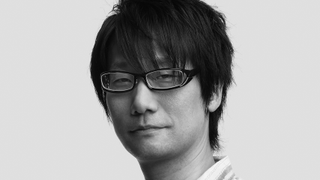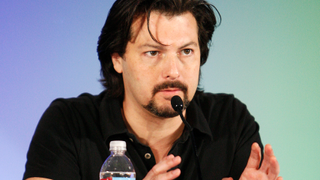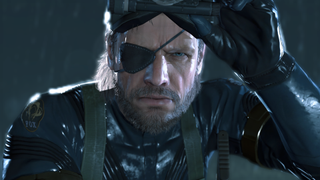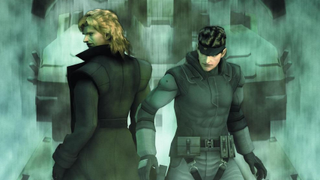The A-Z of Hideo Kojima

Arsenal Gear
This colossal mobile fortress was developed by The Patriots—a sinister Illuminati-like organisation—to monitor, block, and control the flow of data through the internet. Conspiracy theories, paranoia, and invasions of privacy in the digital age loom large in Kojima’s work, and Arsenal Gear is a manifestation of these themes. In Metal Gear Solid’s dystopian near-future, The Patriots control the United States by using the internet to manipulate culture, history, and ideas. Other Metal Gears were designed to launch nuclear weapons, but Arsenal Gear controls information.
Big Boss
This legendary soldier is the heart of the Metal Gear series. Betrayed by the US government, he leaves his country behind to form his own mercenary army, triggering events that will form the complex storyline of the series. In the first game released for the MSX2 in 1987, Big Boss was the villain. Rookie operative Solid Snake was sent into his base, Outer Heaven, to defeat him. Then, later, we learn that Solid Snake and two other ‘brothers’ are, in fact, clones of Big Boss—an attempt to preserve the DNA of the world’s greatest soldier. This is something Kojima does a lot: taking a loose plot thread or half-formed idea and suddenly making it an important part of the mythology. It’s not always successful, but Big Boss’s transformation from a one-dimensional villain to a sympathetic character is one of his greatest triumphs as a writer.
Cipher
Every hero needs a nemesis. Cipher is an organisation formed by a former ally of Big Boss, Zero, and their sinister machinations—including secretly controlling the US government—see them serving as the antagonists for most games in the series. Later known as The Patriots, they are, essentially, the Illuminati—the all-powerful clandestine group that madmen in YouTube comments rant about. Except, in Metal Gear Solid’s universe, they actually exist, and they’re really, really evil.

David Hayter
Fans will forgive Kojima for most things, but the decision to replace long-time Solid Snake/Big Boss voice actor David Hayter with Hollywood veteran Kiefer Sutherland was met with fierce criticism. Kojima’s justification was that he wanted someone who could act with their face as well as their voice, but many saw it as an excuse for the self-confessed film buff to work with a famous actor. Sutherland is talented, but Hayter’s gravelly voice has been synonymous with the series since 1998, and the change was, and still is, hard to stomach. Hayter was, understandably, heartbroken, as were many fans of the series. Sadly, predictions that a young Hayter-voiced Solid Snake would make an appearance at the end of Metal Gear Solid V were unfounded.
Early Years
In the 1960s, a young Hideo Kojima devoured science fiction books, American TV shows, and films—especially westerns and spy movies. All of these things influenced Metal Gear Solid, from the James Bond-inspired Metal Gear Solid 3: Snake Eater and Ocelot’s cowboy fascination, to his interest in American politics and culture. As a boy he wrote his own stories and directed short films with friends from school. However, despite this flair for creativity, he decided to study economics at college. But, feeling creatively stifled, he left and applied for a job at Konami.
Farewell Sausage
Kojima’s Twitter is a bizarre, wonderful thing. He posts pictures of his lunch, insights into his creative process, bad jokes, and nuggets of philosophy. His tweets are a reflection of the Metal Gear Solid series: deep, thoughtful, silly, and occasionally puerile. One minute he’s tweeting about the nature of revenge, the next he’s talking about how, when shaking a plate of eggs Benedict, the eggs “look like boobies.” His tweets are a fascinating journey inside his head and curiously enigmatic. Who else could post a picture of a sausage and imbue it with such mystery?

Ground Zeroes
Released before Metal Gear Solid V, Ground Zeroes is a curio. Not small enough to be a demo, but not big enough to be a full game, it was released at a reduced price by Konami. It’s an incredibly tight, well-designed mini stealth sandbox, and a showcase of the modernised controls, AI, and design we’d soon see in MGSV. Never one to shy away from a cameo, Kojima appears in the game as an intel agent called Hideo who you have to rescue. If you manage to complete the mission with an S rank, which is no mean feat, he’ll turn to the camera and say “That was perfect.”
The biggest gaming news, reviews and hardware deals
Keep up to date with the most important stories and the best deals, as picked by the PC Gamer team.
Hollywood
Film is perhaps Kojima’s greatest influence. “In interviews I like to say that just as humans are 70% made of water, I’m made of 70% movies,” he says. “I’ve loved cinema ever since I was a kid. Movies are a way for me to explore other people’s experiences.” Among his favourite films are The Great Escape (“I wanted to recreate this thrill and tension in Metal Gear.”), Escape From New York (“Being in the midst of my rebellious period, the anti-hero Snake resonated with me.”), North By Northwest (“The camera work is in the realms of God—perfectly calculated.”), and Planet of the Apes (“I was influenced by its anti-nuke message.”) Other favourites include Mad Max: Fury Road (he’s seen it dozens of times), Dawn of the Dead, and the James Bond series.
Ice Cubes
Kojima’s games are known for their remarkable attention to detail and the reactivity of their environments. Nowhere is this more evident than in MGS2’s tanker chapter, in which you can shoot an ice bucket on a bar, spill a load of ice cubes, and then zoom in with your binoculars to watch them melt in real-time. There’s also a rack of pans hanging in a kitchen, and each one makes a differently-pitched noise when you shoot it, letting you play a tune. But as well as being amusing gimmicks, these absurdly granular details often have some function in-game: for example, shoot bags of flour and the ensuing cloud of white powder will reveal hidden laser trip-wires.

Joakim Mogren
Before it was revealed that The Phantom Pain was actually Metal Gear Solid V (even though everyone knew), Kojima revealed that Swedish studio Moby Dick, led by an enigmatic, bandage-wrapped developer called Joakim Mogren, were developing the game. It was, of course, all a ruse, designed to bring attention to the game. ‘Joakim’ is an anagram of Kojima, and ‘Mogren’ contains the word ‘ogre’, referencing MGSV’s codename, Project Ogre. Amazingly, a debate raged about whether Mogren was actually a CG character designed to show off the power of the new FOX Engine. Turns out it was just some bloke with bandages wrapped around his head. Oh well.
Konami
Kojima’s first job was with Konami, and he remained with the company until his shock departure this year. Metal Gear Solid became the company’s flagship series and Kojima reached celebrity status among gamers, but this wasn’t enough to stop them parting ways shortly before the release of MGSV. No one really knows what went on between Kojima and Konami, but the split didn’t seem amicable. Kojima’s name was removed from the cover of MGSV to much uproar, even though his name appears at the beginning of every single mission in the actual game. Even if Konami were right to get rid of Kojima, their reputation has been badly damaged by the whole affair.
Les Enfants Terribles
Family and legacy are important themes in Metal Gear Solid. Les Enfants Terribles was a project started secretly by Cipher to clone Big Boss, resulting in three ‘sons’: Solid, Liquid, and Solidus. Solid became a legendary soldier, Liquid became a villain and threatened to launch a nuke at the US, and Solidus became the President of the United States (before, eventually, becoming a villain himself.) Even though Solid had the inferior ‘recessive’ genes of his dad, he was the closest to him in terms of skill.

Metal Gear Solid
Although the original MSX games were popular and sold well, it wasn’t until 1998’s Metal Gear Solid, released for the PlayStation, that the series really broke through into the mainstream. It was one of the defining games of Sony’s world-conquering CD-based console, with cinematic cut-scenes, full voice acting, and a detailed 3D world. This was the game that made Kojima a superstar and introduced the world to Solid Snake, one of the most beloved characters in gaming history.
Nuclear Proliferation
The shadow of nuclear war hung over every child growing up in post-war Japan. Hiroshima and Nagasaki impacted the country emotionally as well as physically, so it’s no surprise that this is an important theme in Kojima’s work. Metal Gear Solid, particularly the 1998 game, are staunchly anti-nuke. Its setting, Shadow Moses, is a dumping ground for dismantled nuclear warheads, and a lot of the game’s lengthy codec calls are earnest conversations about the morality of nuclear bombs and the impact they’ve had on the world and its politics—and will have on future generations. The way Kojima combines these thoughtful, important themes with cyborg ninjas is a big part of what makes his games so special.
If it’s set in space, Andy will probably write about it. He loves sci-fi, adventure games, taking screenshots, Twin Peaks, weird sims, Alien: Isolation, and anything with a good story.

Amazon's Mass Effect TV show now in 'active development' from the writer of F9: The Fast Saga (the one where a car goes to space)

Take-Two CEO says Grand Theft Auto 6 is on track for 'fall' next year, GTA 5 has sold over 205 million, and 'PC will be more and more a part of [our] business going forward'
Most Popular

